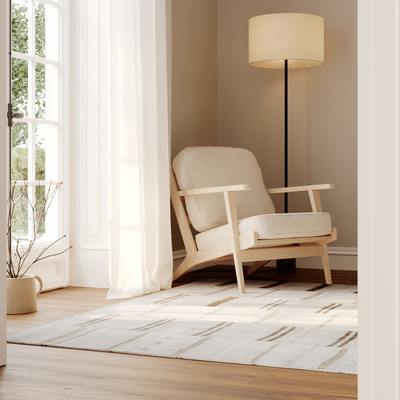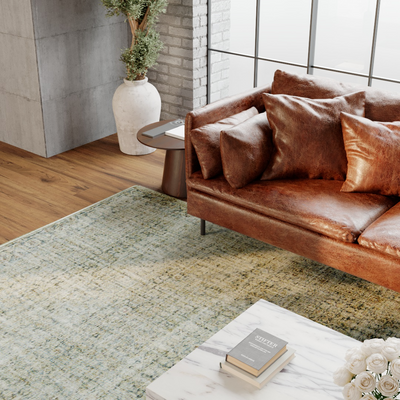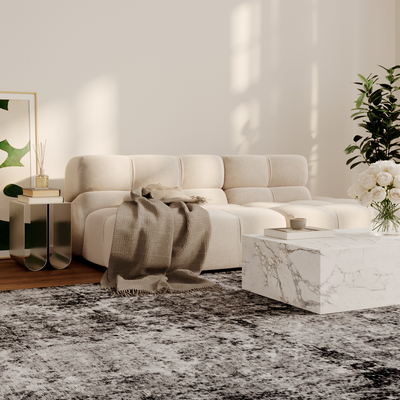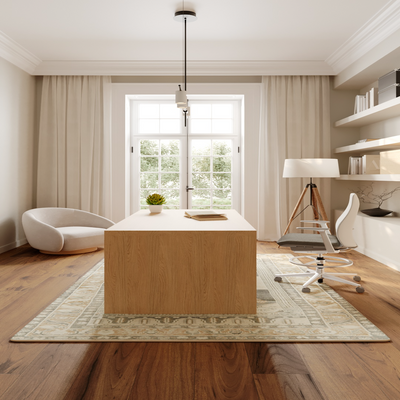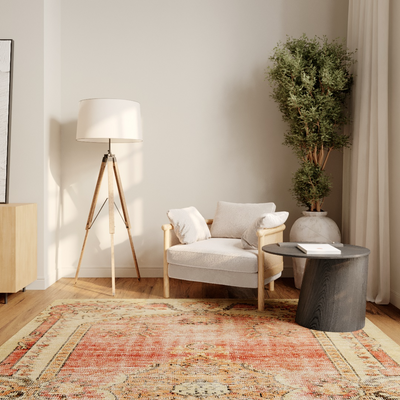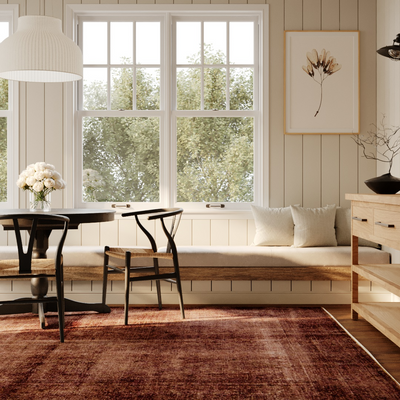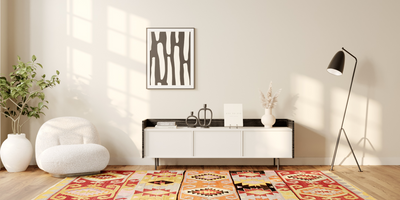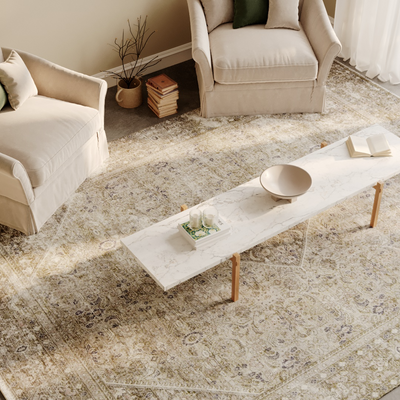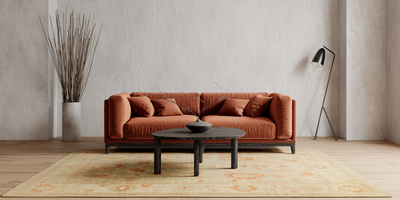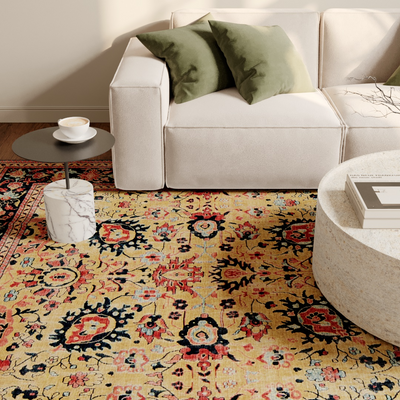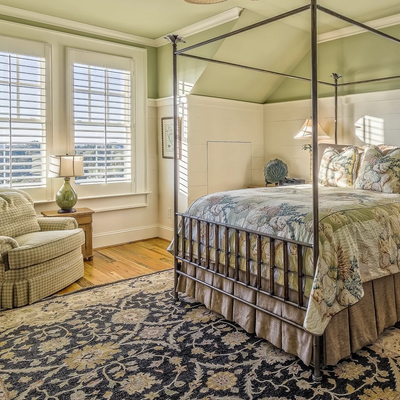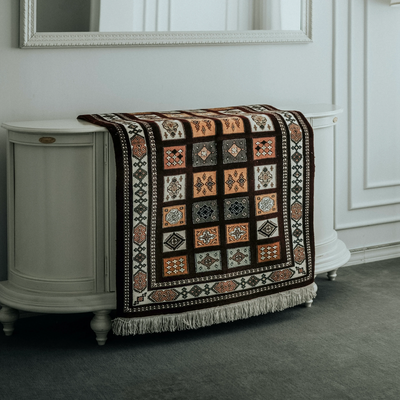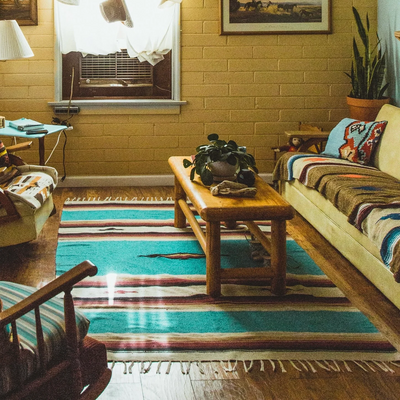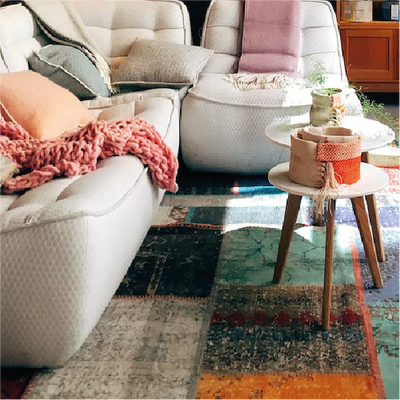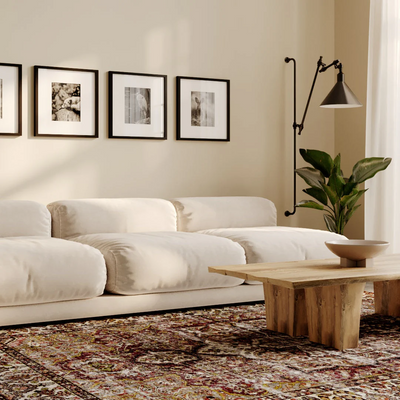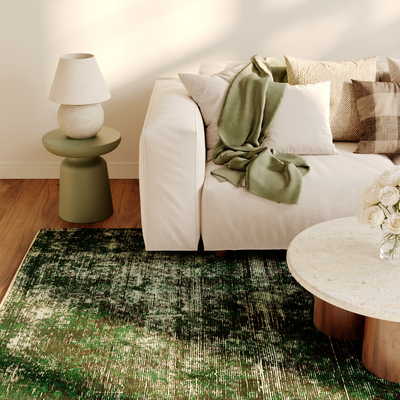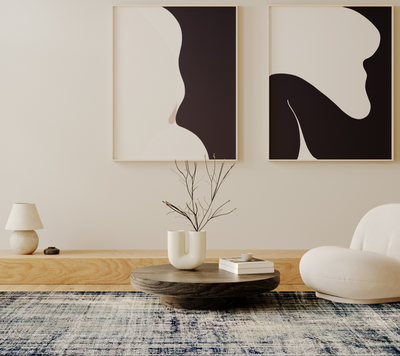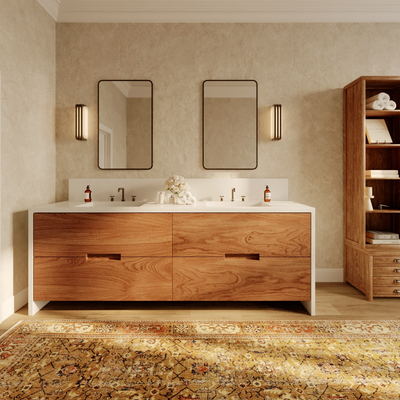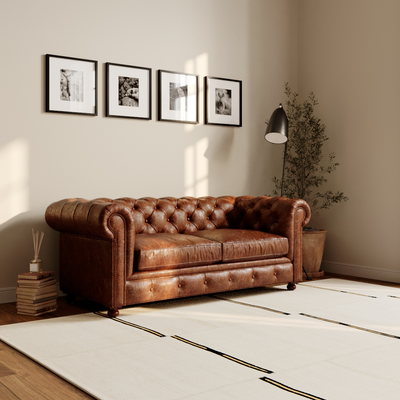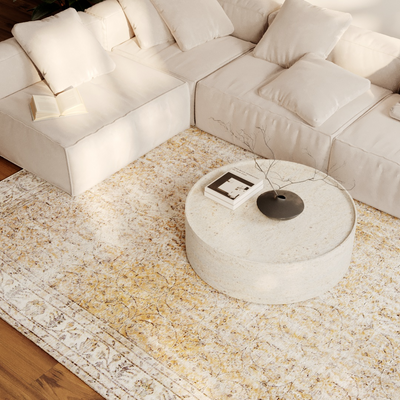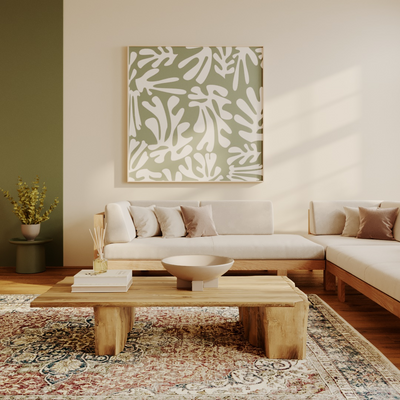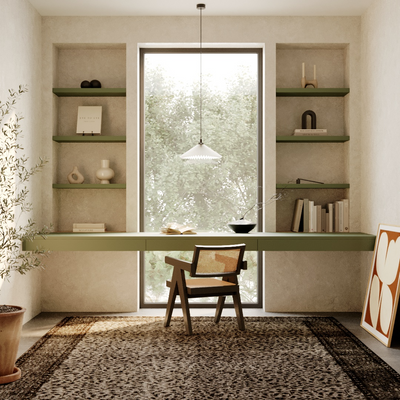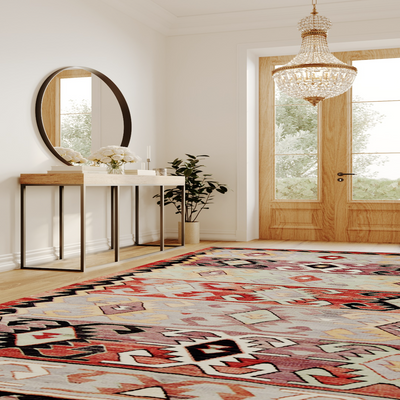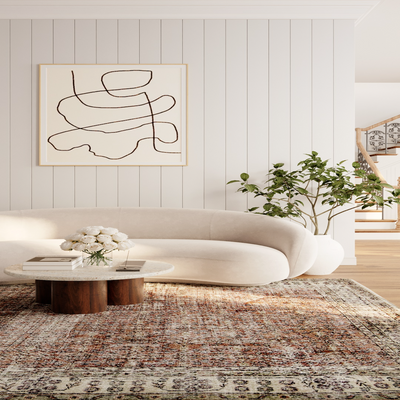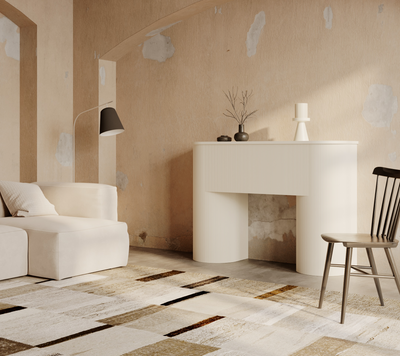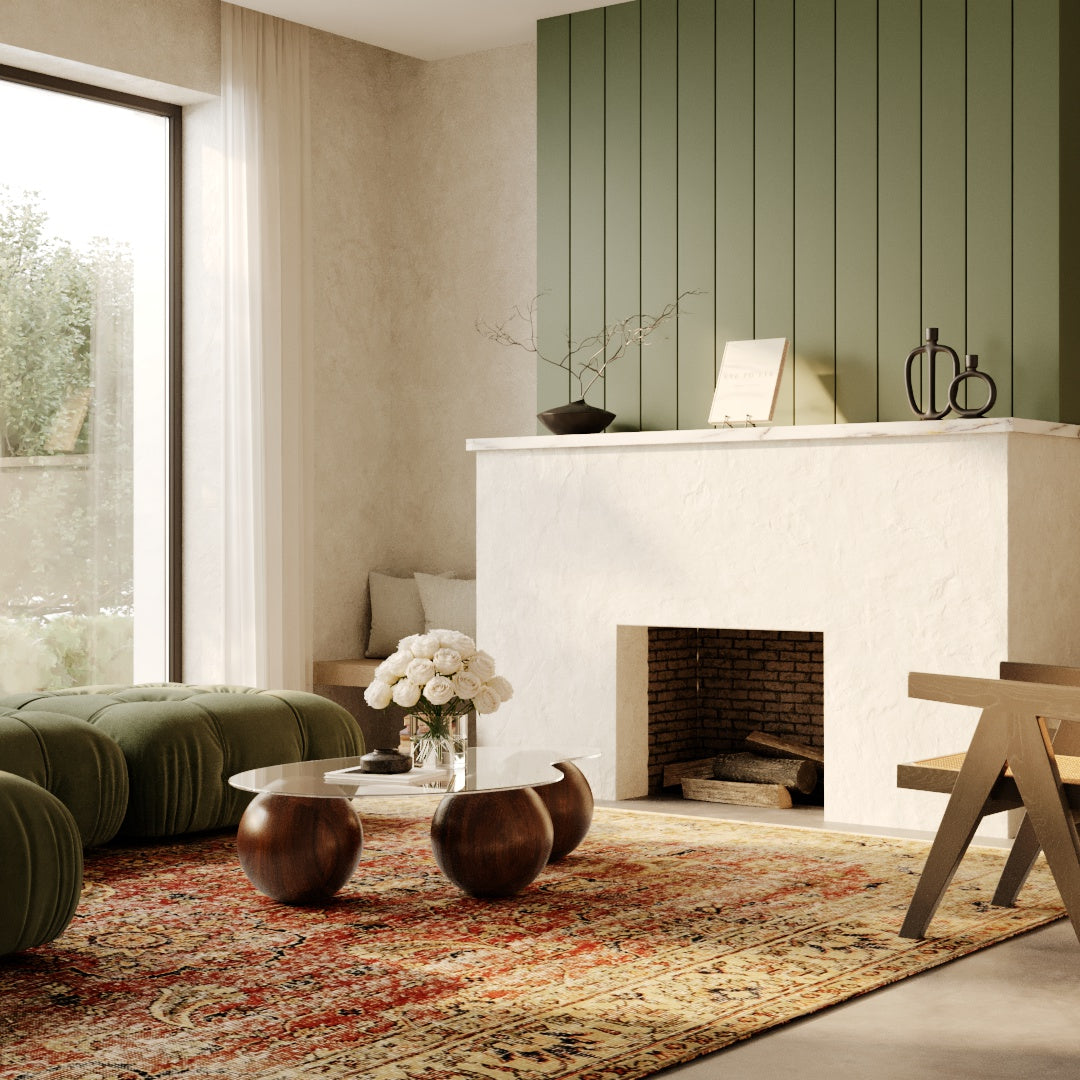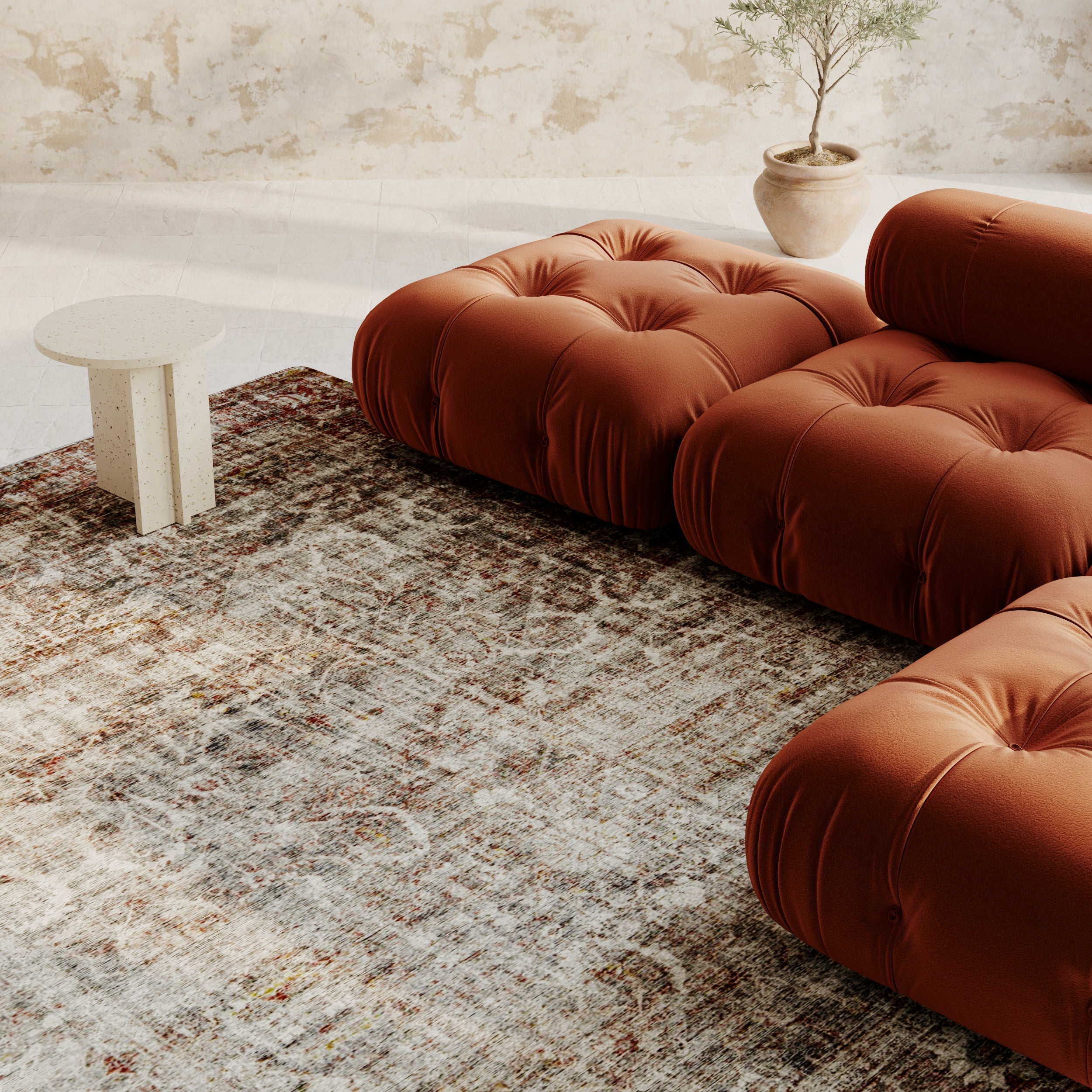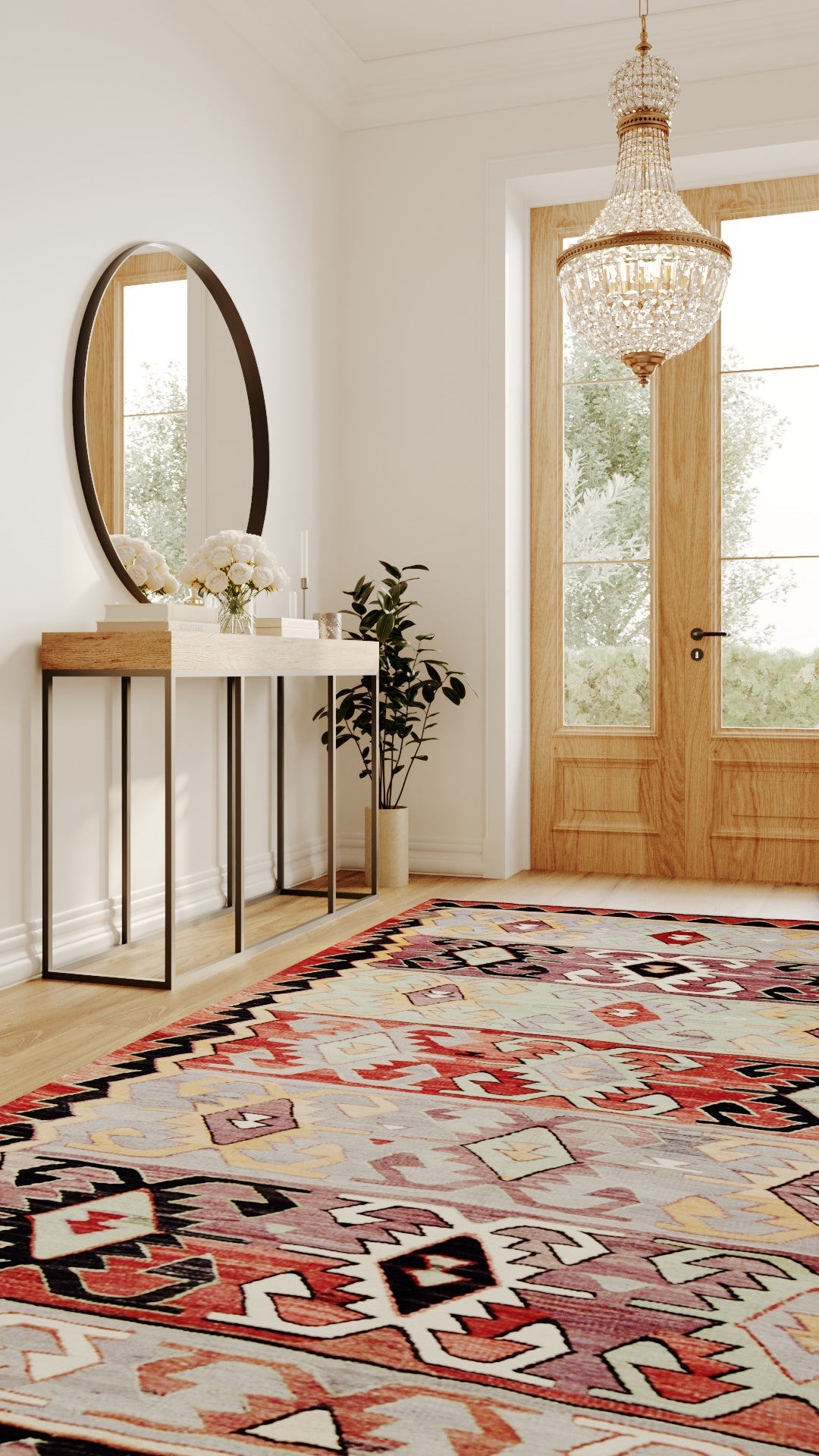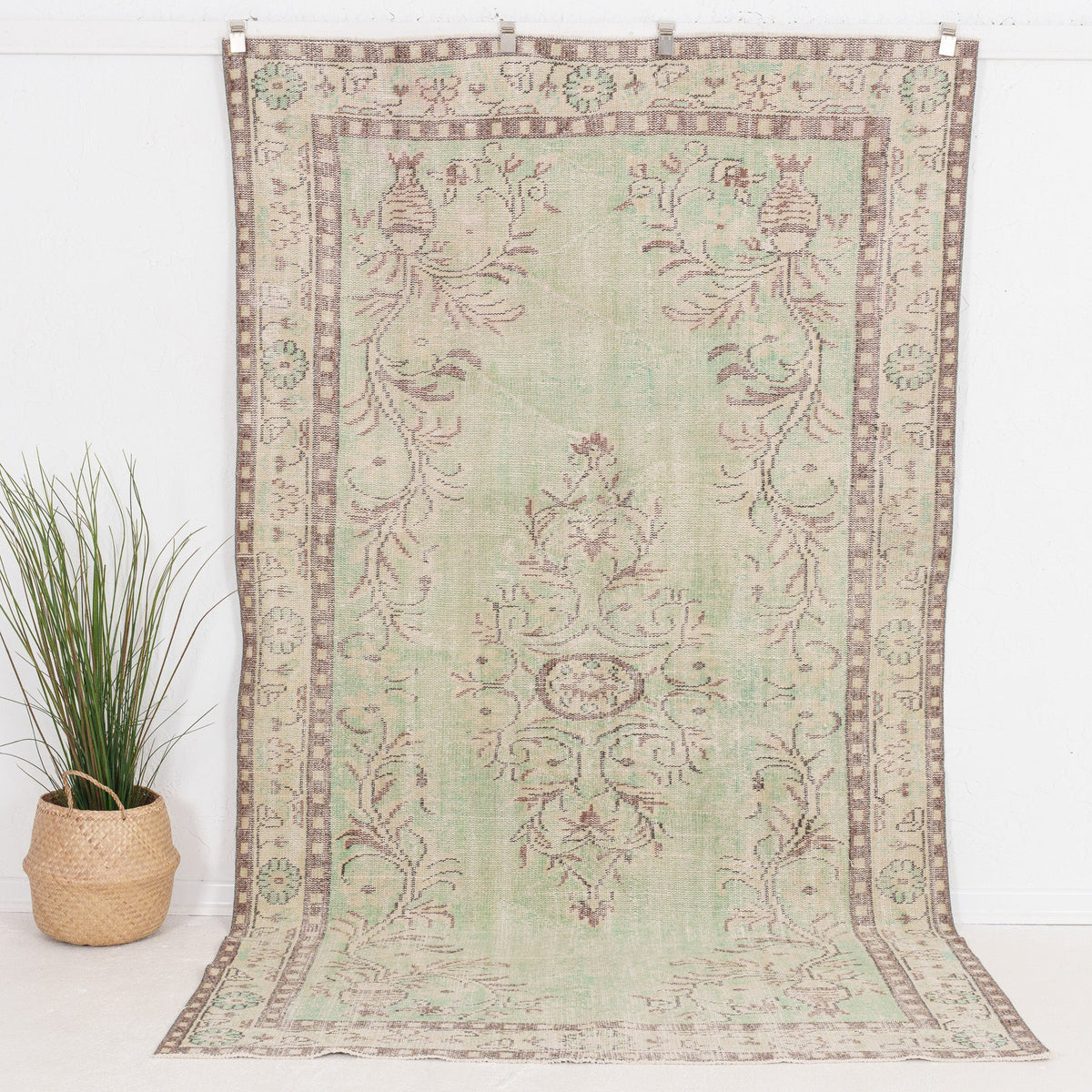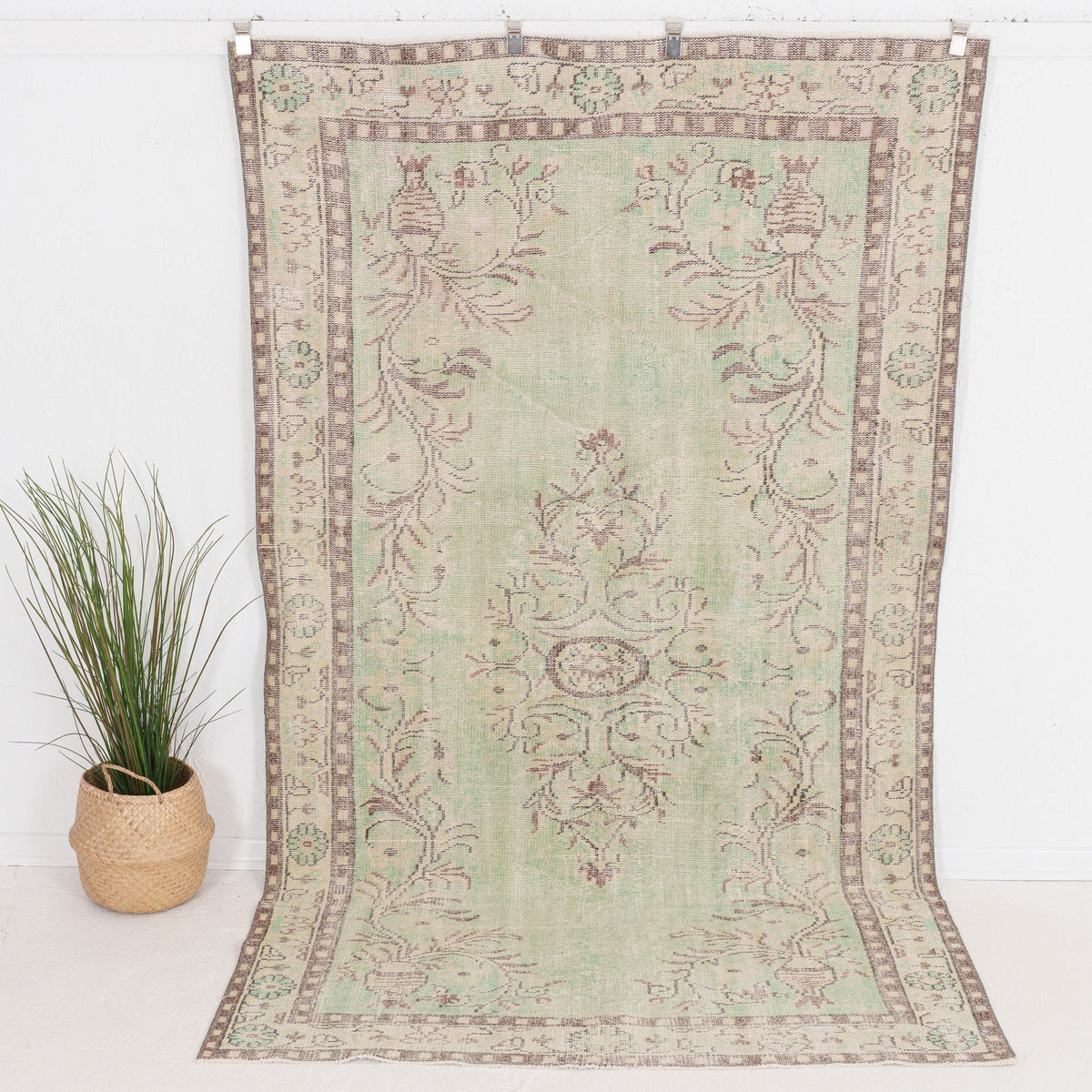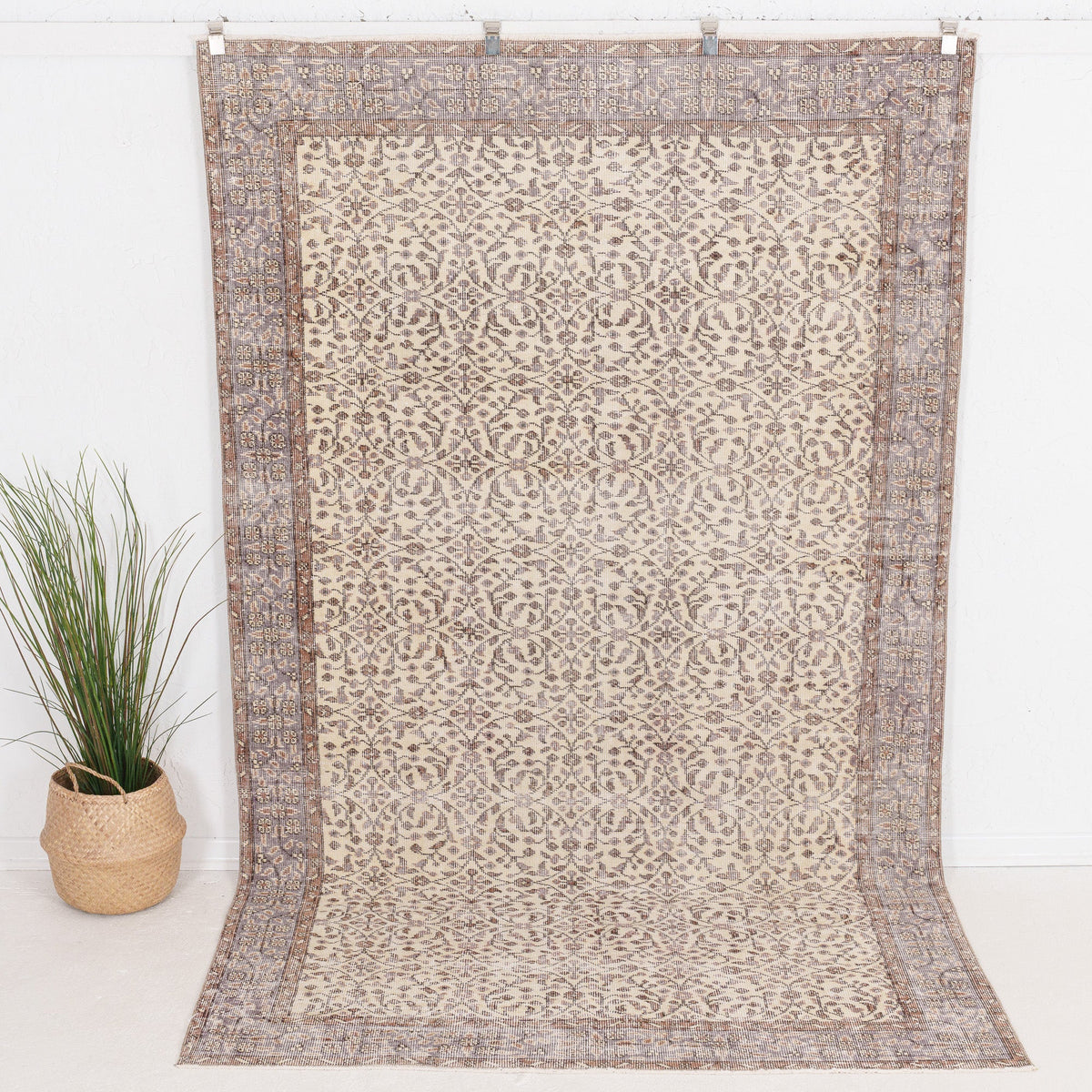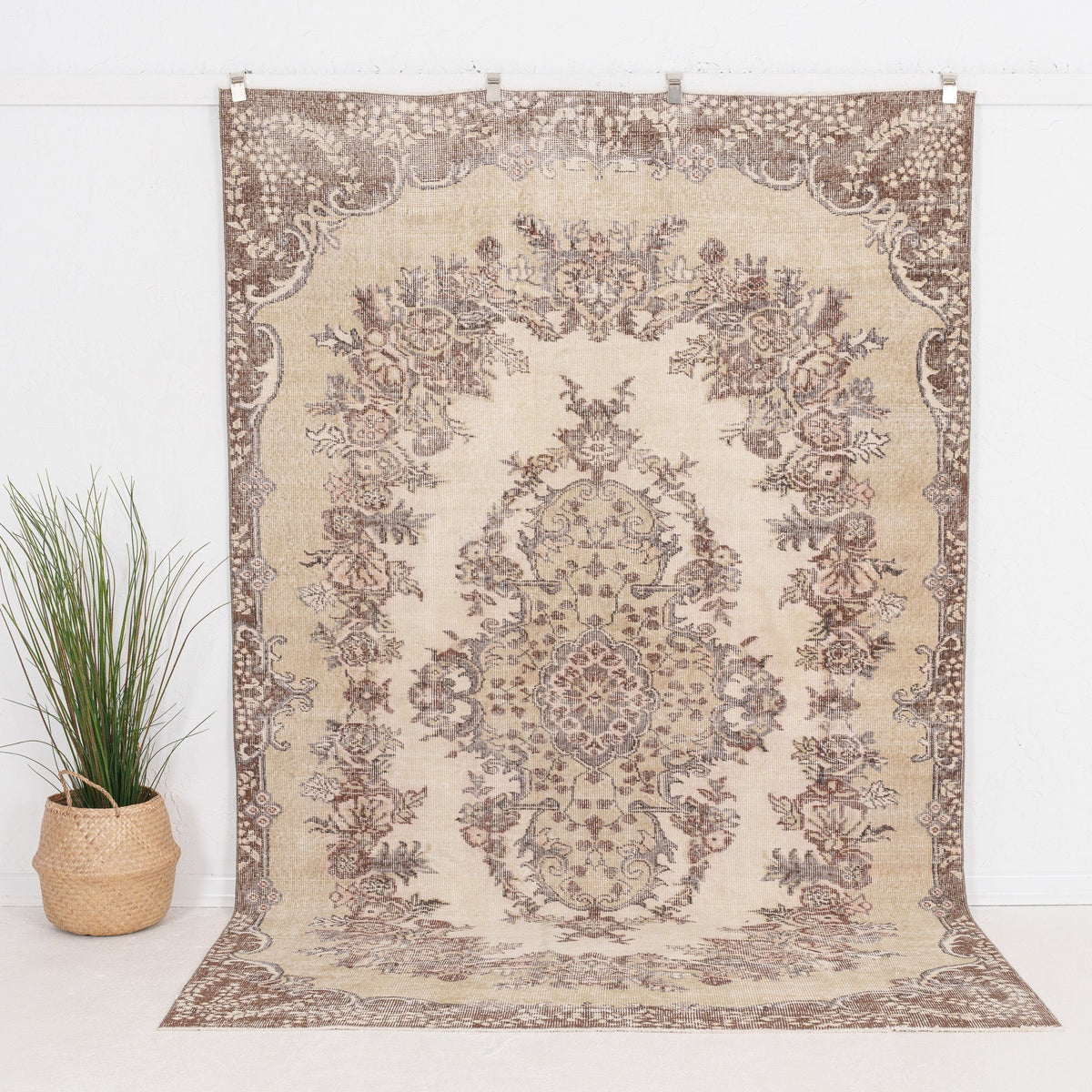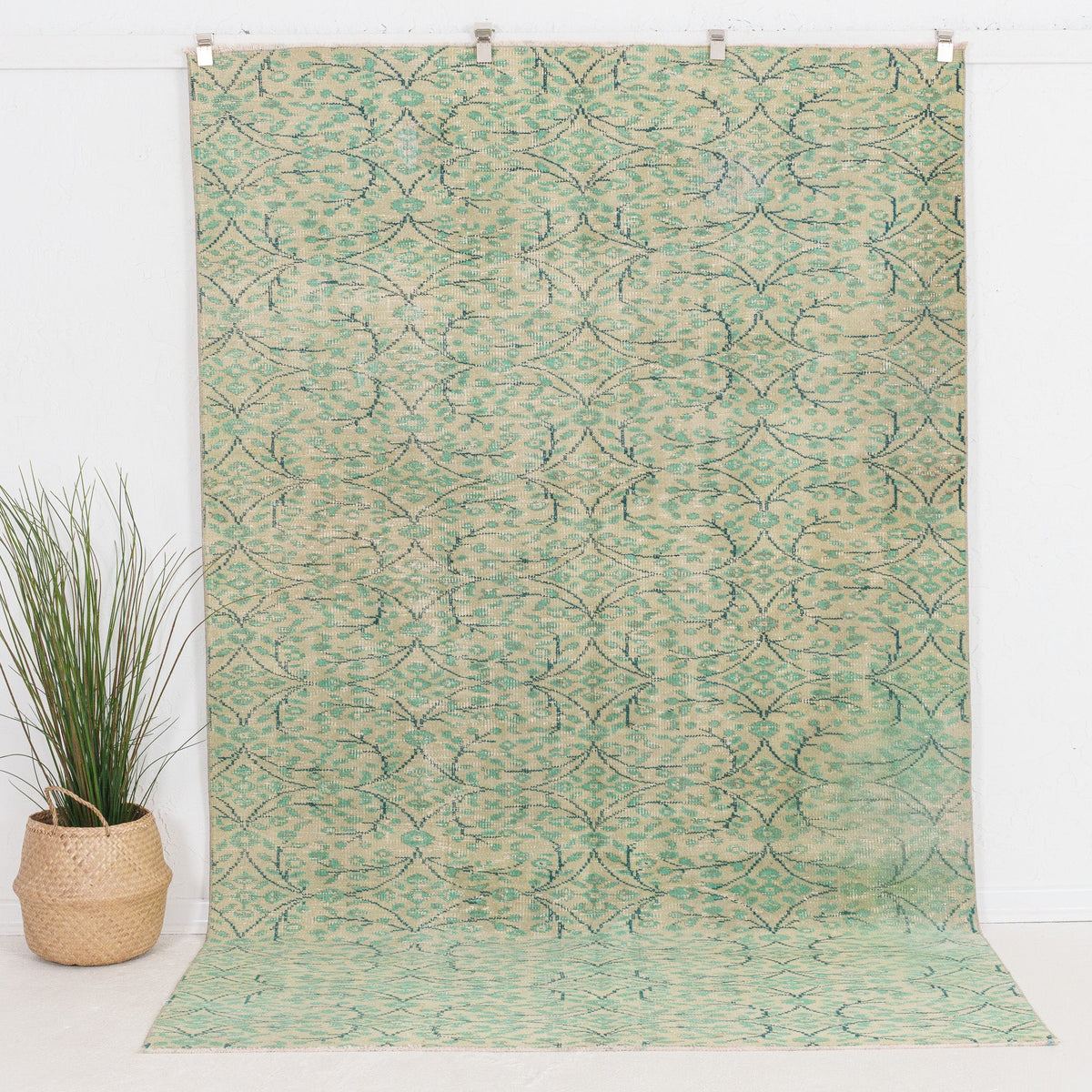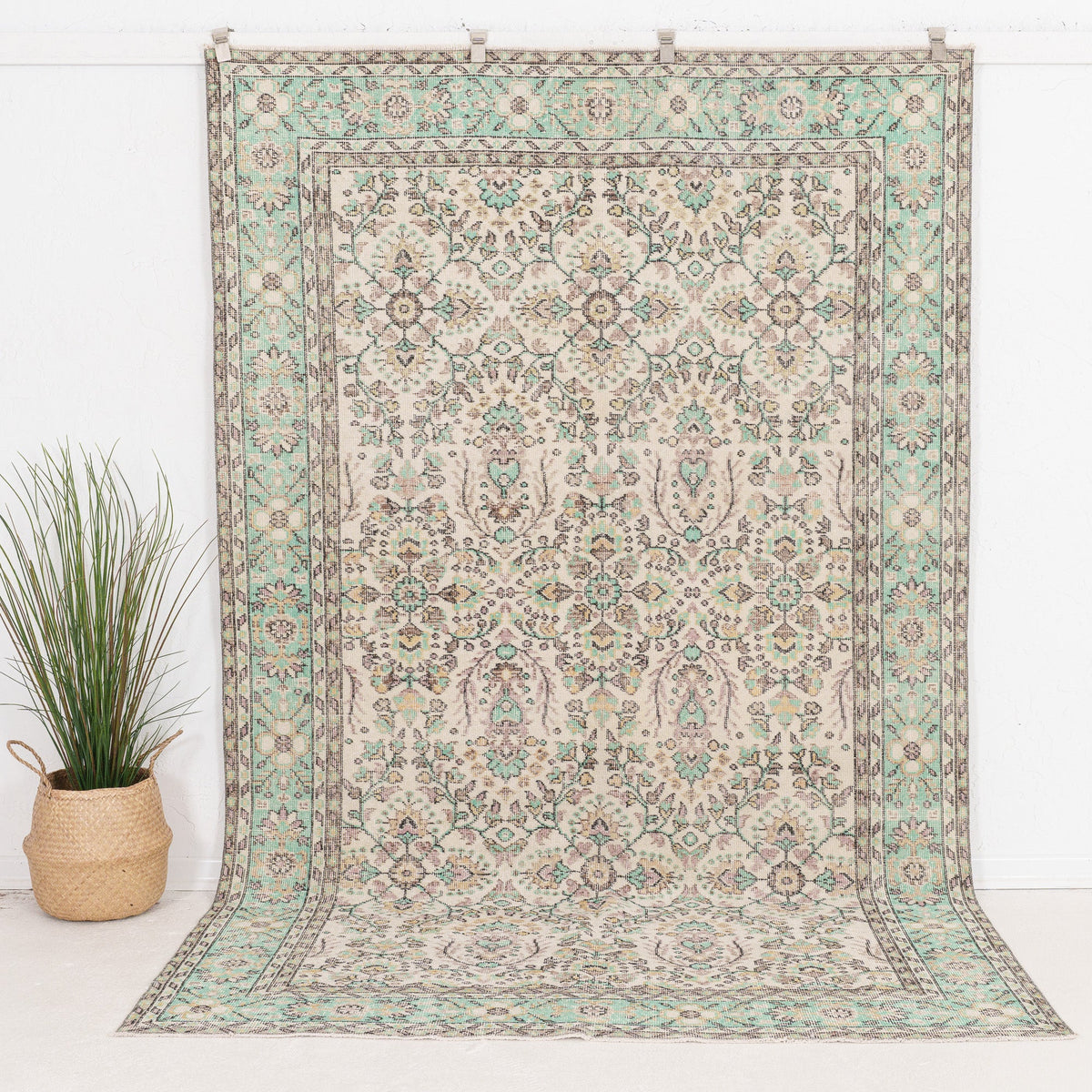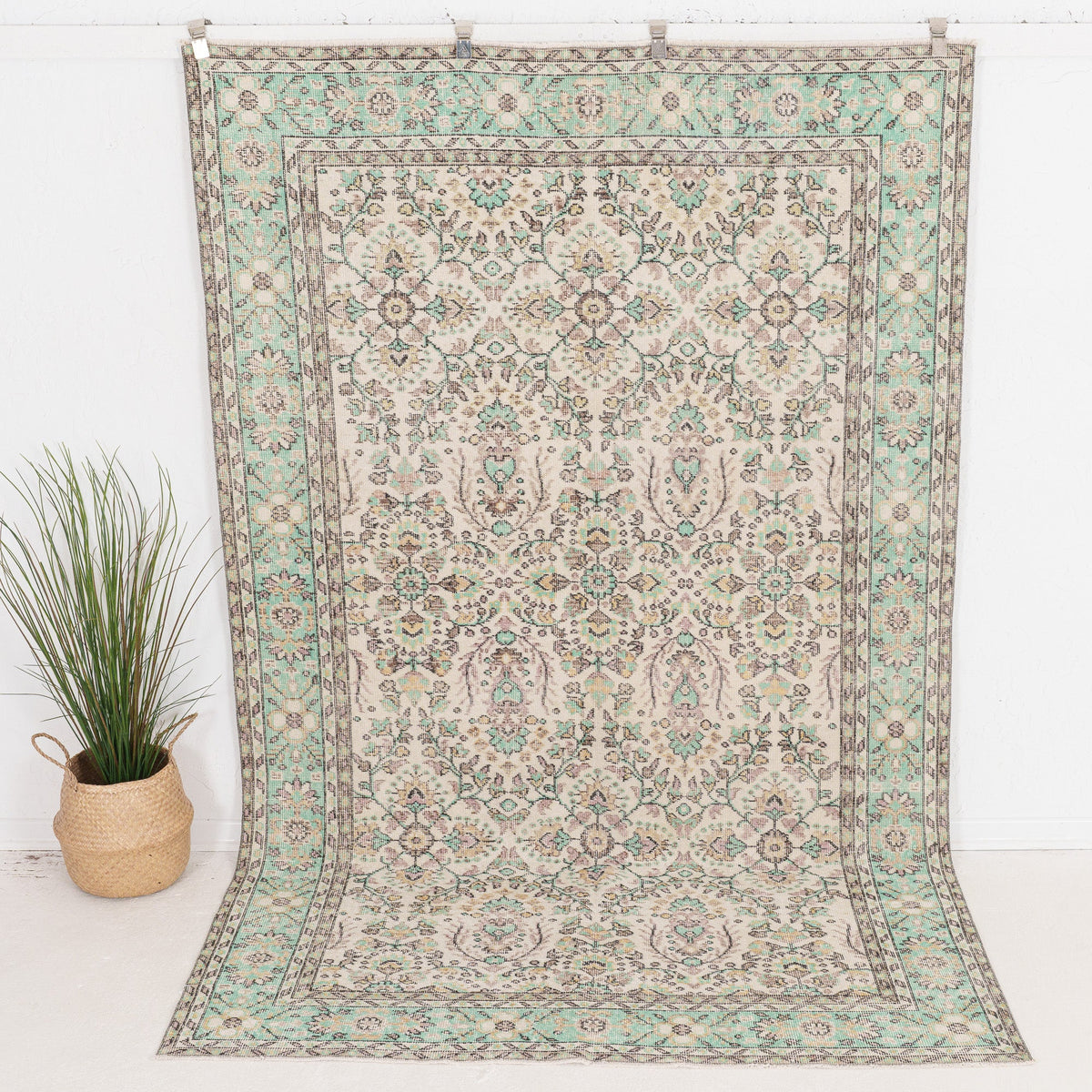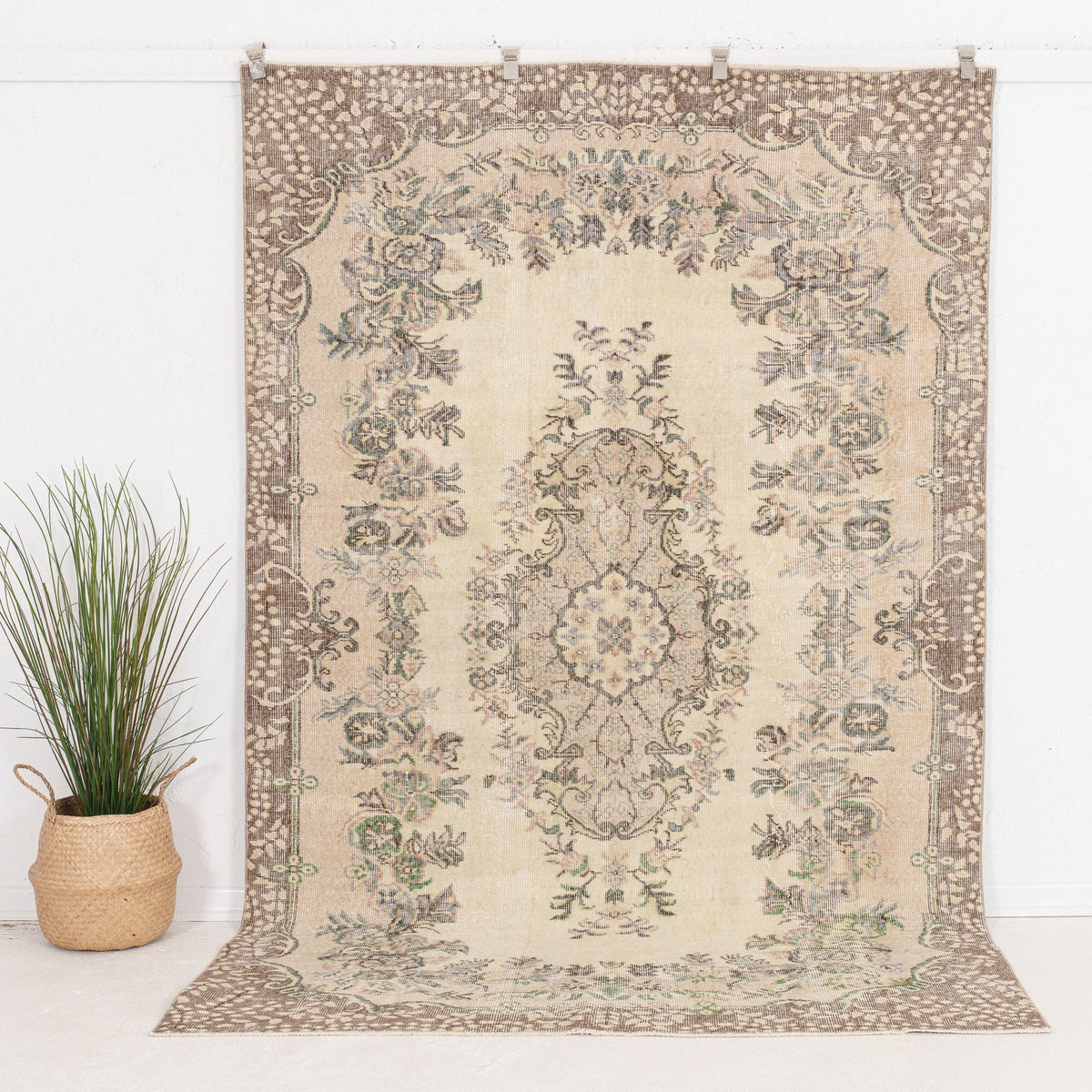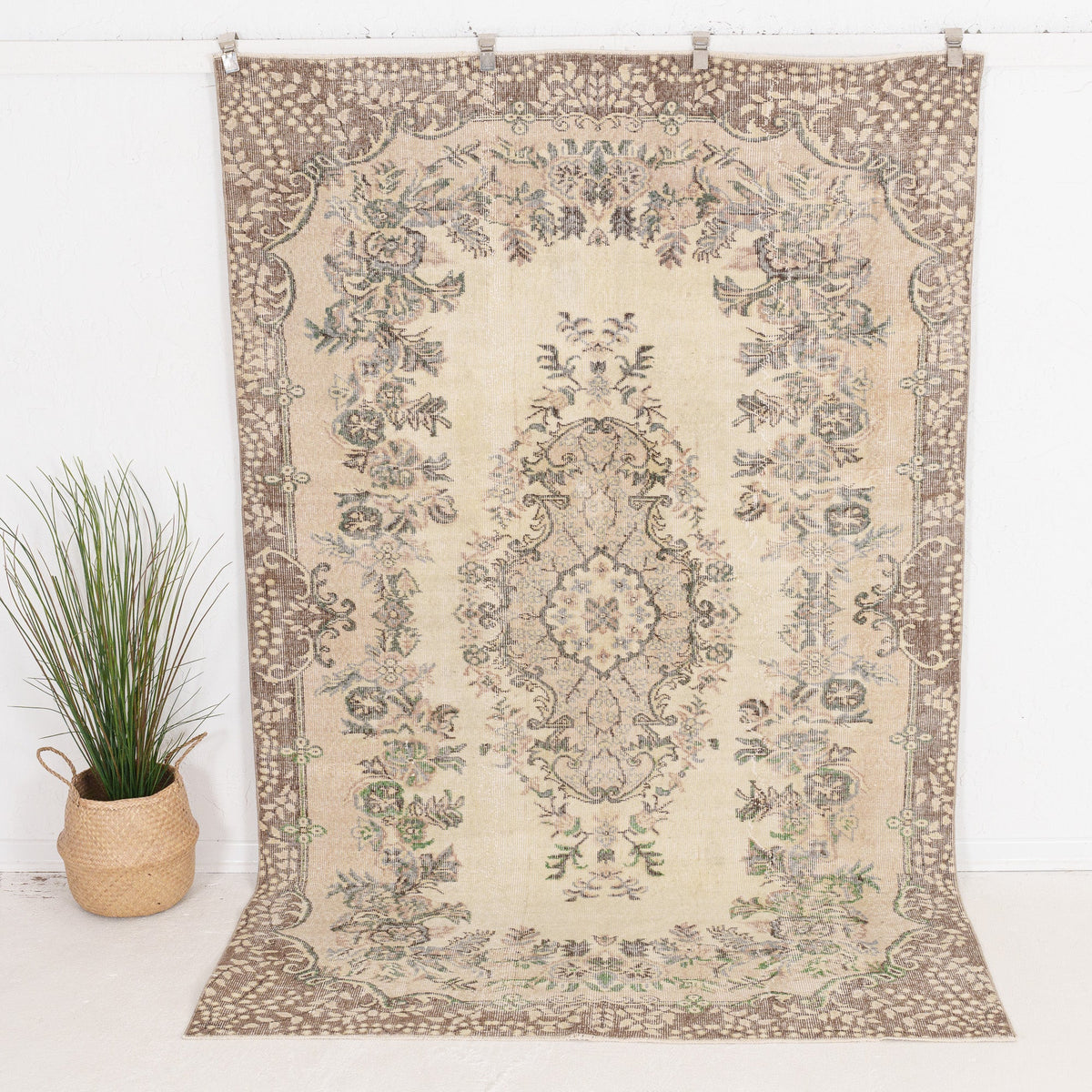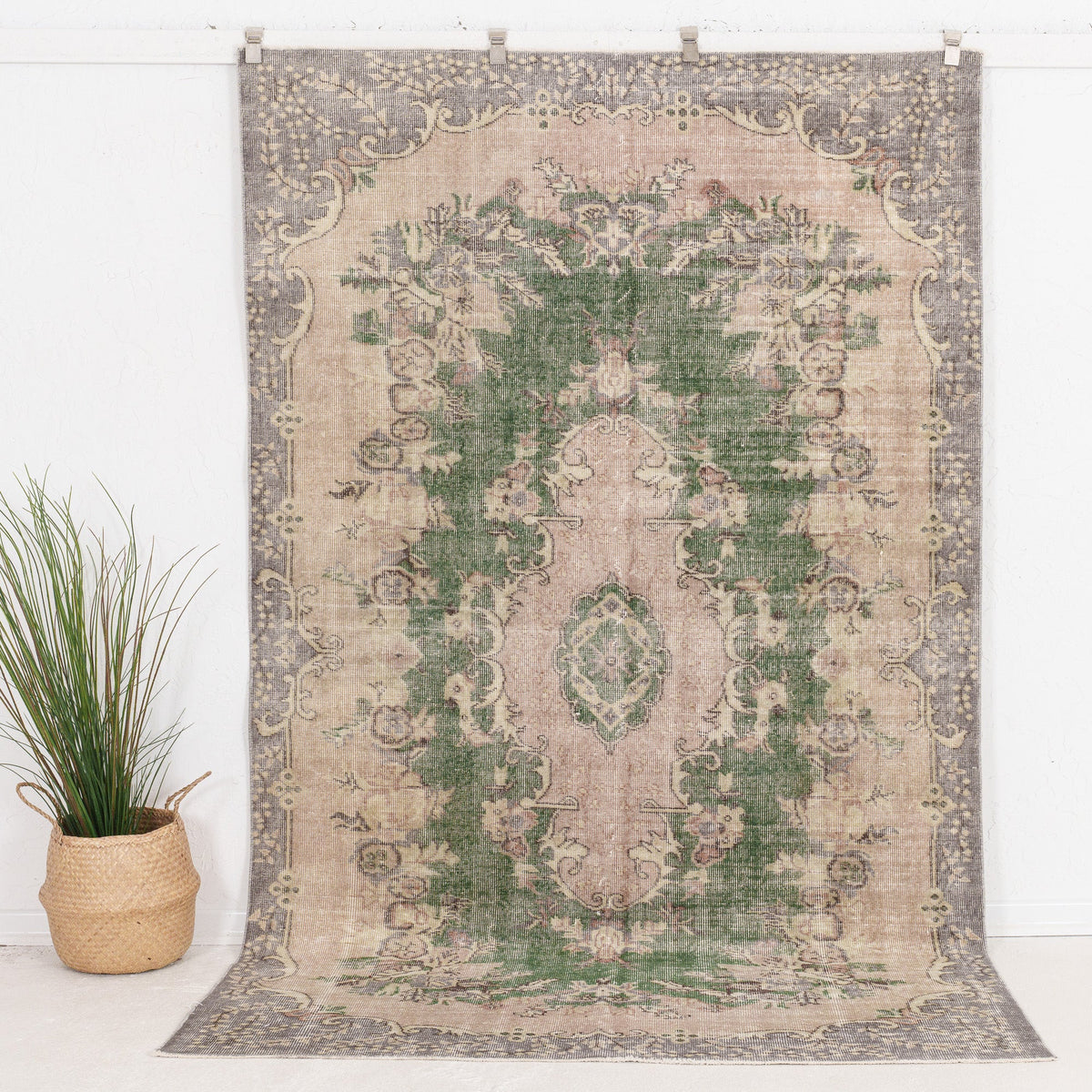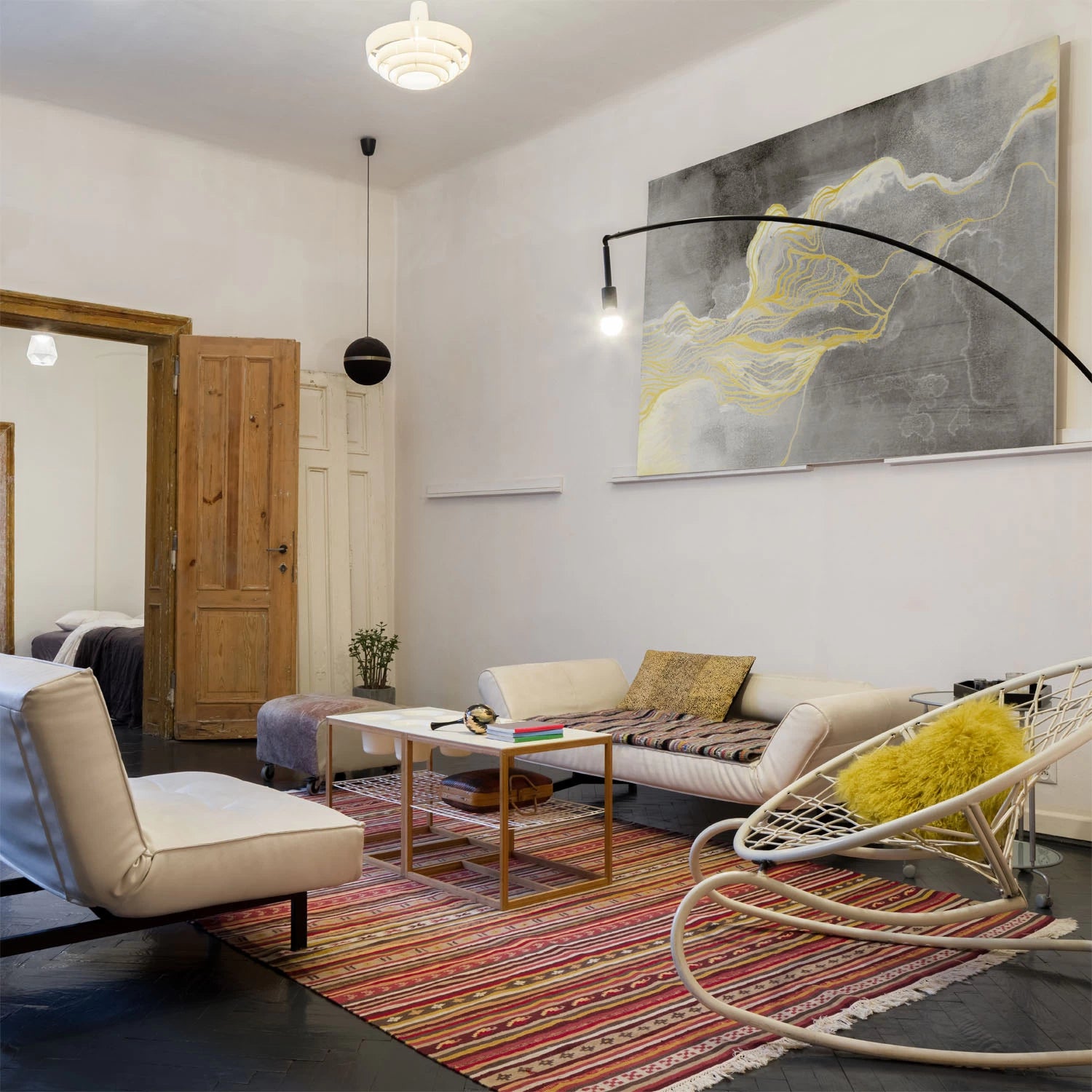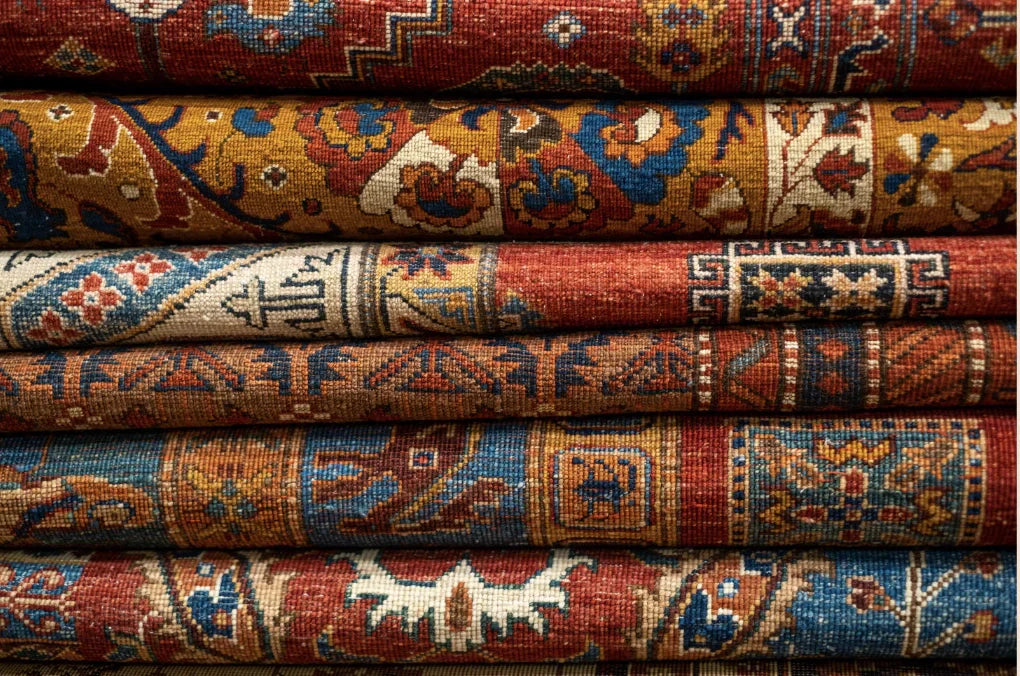In the realm of interior design, vintage items hold a unique allure, a promise of timeless beauty blended with rich stories of the past. Among these, vintage rugs have surged in popularity, prized for their ability to instantly transform a room with their charm and elegance. In particular, introducing a vintage rug into your dining area is a brilliant way to add warmth, color, and character to the space. But how can you do it with style? How can you harmoniously blend the old-world allure of a vintage rug with your dining area's existing decor? In this blog, we will delve into the world of vintage rugs, exploring different ideas on how to tastefully incorporate a vintage rug under your dining table, catering to an array of styles and tastes. Let's embark on this journey into the past, to bring a touch of vintage charm into your dining space today.

Why a Vintage Rug in Your Dining Room?
Infusing vintage charm into contemporary spaces is a trend that has taken the design world by storm, and one exceptional way to achieve this is by placing a vintage rug in your dining room. A vintage rug, rich with history and character, not only enhances the aesthetics of your dining area but also creates a warm, inviting ambiance. It transforms the dining space into a unique conversation piece, all while providing practical benefits such as noise reduction and floor protection. In the following sections, we'll explore various ways to incorporate a vintage rug under your dining table, suiting every style and preference.
Types of Rugs to Consider
When decorating your dining room with a vintage rug, it's essential to consider the various types of rugs available and how they might suit your space. Durability and ease of maintenance are vital, particularly in a dining room, where food and drink spills are more likely to occur.
One popular choice is natural fiber rugs, including those made from wool and jute. Wool rugs are renowned for their durability, resistance to stains, and wide range of colors and patterns. They can add a luxurious and warm touch to your dining room. On the other hand, jute rugs bring an earthy, organic feel to your space and are typically more affordable than wool. However, they may not be as resistant to spills or heavy foot traffic.
Polypropylene rugs are also a worthy consideration. They are synthetic and highly durable, resisting most stains and wear. These rugs come in a plethora of styles, imitating the look of many natural fibers and come with the added bonus of being relatively affordable.

The shape of the rug also plays a significant role in shaping the aesthetic of your dining area. Rectangular rugs are the most traditional choice and work well with rectangular or oval dining tables. Circular rugs, however, make a statement and can beautifully complement a round dining table.
Regardless of the type or shape of the rug, selecting a vintage rug brings an infusion of history and charm, creating a dining room that feels uniquely yours.
Perfect Size and Style for Your Dining Space
Choosing the right size and style of a rug is paramount in bringing together the overall aesthetic of your dining area. The rug should complement the shape and dimensions of your dining table while aligning with the style of your room. Additionally, it should be large enough to accommodate all chairs, even when pulled out. The choice of a vintage rug style can vary significantly, from traditional patterns to more eclectic designs, each creating a unique ambiance in your dining space. In the following sections, we'll delve into how you can select the perfect size and style of a vintage rug for your dining area.
Natural Fiber Rugs for High-Traffic Areas
High-traffic areas, such as the dining room, require a rug that can withstand constant foot traffic while maintaining its aesthetic appeal. Natural fiber rugs, especially those made of jute and wool, excel in this respect. They possess inherent durability and a rugged beauty that retains its charm even with significant wear and tear.

Jute rugs, known for their rich textures and natural color variations, lend an earthy and organic feel to the dining room. However, they are somewhat less durable compared to wool rugs, which are recognized for their exceptional resilience and longevity. Wool rugs also have an inherent ability to resist staining and soiling, making them an excellent choice for a dining room.
Despite their higher price point compared to synthetic rugs, natural fiber rugs offer the advantage of being environmentally friendly, adding character and warmth to any room. Their rich textures and authentic look often surpass their synthetic counterparts, which try to imitate these characteristics.
Maintaining natural fiber rugs in high-traffic areas involves regular vacuuming, preferably with a low-power setting to prevent the fibers from getting pulled out. Spills should be addressed immediately, spot cleaned with a damp cloth and mild soap to avoid staining. Following these care tips, your natural fiber rug can retain its beauty and functionality for years to come.
Bold Patterned Rugs for Elegant Design Styles
If your dining space aims for an elegant design style, bold patterned rugs are an excellent choice. These rugs bring an immediate visual impact that adds personality, character, and charm to the room. Their standout designs can act as an anchor for the entire space, setting the tone for the rest of your decor.
One of the popular types of bold patterns is geometric designs. These rugs, adorned with circles, squares, lines, or diamonds, can bring a modern and sophisticated look to your dining area. A diamond pattern in neutral colors, for instance, works well with wooden dining tables, tying together the natural elements of the room while adding a dash of sophistication.
Floral patterns, on the other hand, bring a classic touch of elegance. Paired with antique or rustic furniture, they can create a warm, inviting atmosphere.
Alternatively, abstract and modern patterns provide an element of surprise and interest. These rugs work well in minimalist or contemporary dining spaces, serving as the focal point of the room.
Incorporating a bold patterned rug is a dynamic way to infuse style and interest into your dining area. Whether you opt for geometric, floral, or abstract patterns, these rugs can significantly enhance the visual appeal of your space.
Geometric Patterns for Versatility
Vintage geometric pattern rugs have a timeless appeal that blends seamlessly into various design styles. Their structured shapes and bold designs instantly add personality and character to a dining area. Whether you're inclined towards modern simplicity, boho chic, or even the comfort of traditional decor, geometric rugs offer an elegant versatility that can easily adapt to your chosen style.
Popular geometric patterns, such as triangles, squares, hexagons, and diamonds, have been a mainstay in rug design for centuries. Each pattern carries its unique charm and can dramatically alter the vibe of a room. For instance, a rug with a triangle pattern can lend a modern and youthful feel, while hexagons can evoke a sense of harmony and balance. On the other hand, diamond patterns often create a dynamic visual interest, perfect for both boho and modern design styles.
Squares, known for their simplicity and balance, can easily fit into traditional decor schemes, adding a sense of order and consistency. Regardless of the geometric pattern you choose, these rugs have the power to bring your dining area to life, making each meal a visually engaging experience.
Diamond Pattern Rugs for the Perfect Dining Table Setting
A diamond patterned rug under your dining table can serve as a beautiful focal point, injecting a touch of elegance and charm into your dining space. With their symmetrical, interconnected shapes, diamond patterns bring a unique visual impact that's both dynamic and soothing. These rugs feature varying sizes of diamond designs, often rendered in diverse colors, making them a versatile choice that complements any dining room style.
Choosing the right diamond patterned rug requires careful consideration of your dining table's size and shape, and the existing color palette of your dining room. Aim for a harmonious balance where the rug serves as a unifying element rather than overwhelming the space. Consider options like the Dash & Albert Herringbone Woven Cotton Rug, known for its refined elegance, or the Hook & Loom Flatweave Eco Cotton Rug that offers a more minimalist approach. For a more traditional and luxurious feel, a Persian area rug with intricate diamond patterns could be an ideal choice.
Remember, the goal is to create a welcoming dining space where the rug enhances the overall ambiance, inviting you to sit, dine, and enjoy the company of family and friends.
Floral Patterns for a Visual Impact
Dining spaces adorned with floral patterned rugs exude a distinct charm and sophistication. These patterns, with their intricate designs and vibrant colors, can make a stunning statement when chosen as the focal point for your dining room. Floral rugs run the gamut from classic rose bouquets with a romantic appeal to more abstract and modern flower motifs that can add an artistic touch.

Choosing the right floral rug involves careful consideration of your dining room's color scheme. A well-chosen palette can complement your decor and tie everything together harmoniously. Consider pairing your floral rug with solid-color furniture to create a balanced look. Alternatively, you could juxtapose it with other bold patterns for an eclectic mix, creating a dining space that feels energetic and reflects your personal style. The beauty of floral patterns lies in their versatility and their ability to create a visually impactful space, perfect for hosting memorable dining experiences.
Neutral Colors for Design Flexibility
In the world of interior design, neutral colors often reign supreme due to their unmatched versatility and timeless appeal. When it comes to vintage rugs, neutral shades can provide the design flexibility you need, allowing seamless coordination with a multitude of decor elements in your dining space.
Soft, toned-down versions of colors such as blush, mint, and taupe can subtly enliven your space without being too bold or overpowering. At the same time, classic neutrals like gray, navy, and deeper shades of beige can serve as a solid base for your room's color scheme, adding depth and sophistication.
However, neutral doesn't have to mean boring. Consider choosing a vintage rug with an interesting pattern in a neutral palette to add character to your dining space. These rugs can introduce visual interest and texture to your room, making your dining area feel warm, inviting, and full of personality.
Floor Plans to Consider When Placing Your Rug
Understanding your dining room's floor plan is crucial when positioning a rug. This includes being mindful of the furniture arrangements, the room's size, and the shape of your dining table. Generally, your rug should be large enough to sit underneath all furniture, providing a unifying element and defining the dining area.
The dimensions of the rug should be compatible with your dining table's shape, whether that's round, rectangular, or another form. Similarly, the shape of the room plays a vital role in rug placement, with the potential to emphasize or soften its lines and curves depending on the rug's positioning.
Lastly, don't forget the practical aspect. Ensure the floor plan allows for easy chair movement and doesn't hinder foot traffic. After all, the rug should complement your dining space, not complicate it.
Choosing the Right Rug For Your Style
Choosing a rug for your dining area goes beyond just measurements and placement. It's also a matter of style, of reflecting your aesthetic and harmonizing with the existing decor. A well-selected rug can be the defining element that brings your room together, creating a cohesive and appealing look. From bold patterns to subtle hues, natural fiber to synthetics, the perfect rug for your dining room will marry form and function, enhancing the overall design while still serving its practical purpose. In the upcoming sections, we'll guide you through some stylistic considerations to help you make an informed choice that complements your unique style.

Wooden Dining Table and Chairs Matching with Jute Rugs
Wooden dining table and chairs offer a classic and timeless appeal that can anchor any dining room. However, to complete this look, a suitable rug is essential. Jute rugs, made from natural fibers, are an excellent choice to pair with wooden dining furniture. These rugs are not only eco-friendly but also add a rich texture and warmth to the dining space, making it more inviting. Moreover, jute rugs are known for their durability, making them ideal for areas that receive high foot traffic. To achieve a harmonious look, consider selecting a jute rug that beautifully complements the wood tones of your dining table and chairs. Remember, the right combination can enhance your dining room's aesthetic and create a welcoming ambiance for your meals and social gatherings.
Personal Style and Color Preferences
Selecting a rug goes beyond simple practicality - it's also an expressive art. Your personal style is a reflection of your character, your passions, and your sensibilities. It's an extension of who you are. When you pick a vintage rug that mirrors your personality, it adds depth and character to your dining space. It's not just a rug; it's a statement piece, an echo of your style.
When considering color preferences, think of your favorite colors and shades. Do you lean more towards soothing blues, vibrant reds, or maybe earthy greens? Colors can significantly influence the mood of a room. They can evoke feelings of calm, energy, warmth or sophistication. While neutral tones such as beige, gray, and white offer a classic, timeless appeal and versatility, don't be afraid to explore and experiment with colors if that aligns with your style.
The choice of pattern on your rug is another opportunity to showcase your unique taste. From geometric shapes to floral designs, or even abstract art, patterns can transform a simple rug into an attention-grabbing piece. They can bring in elements of rhythm, movement and visual interest into your dining area.
Also, consider your existing decor and furniture. The rug should be harmonious with the overall aesthetics of your dining space. It should seamlessly blend with your furniture style, wall color, art pieces, and other decor elements.
A great approach when selecting a vintage rug is asking yourself a few guiding questions: What colors and patterns am I consistently drawn to? What design style defines my home - is it minimalistic, bohemian, traditional, or a mix? What existing decor piece do I love, and why? By reflecting on these questions, you'll be able to make a choice that's not only functional but also profoundly personal and aesthetically pleasing.
Remember, the rug you choose is more than just a floor covering. It's a piece of your world, a canvas for your style, a symbol of your taste. Make it count.
Matching Dining Room Furniture With a Vintage Rug
When choosing a vintage rug for your dining room, it's important to consider how it will interact with your furniture. The goal is to create a harmonious blend of elements that express your personal style while maintaining a comfortable and functional space.
One popular choice is to pair wooden dining tables with jute rugs. The warmth and texture of the jute provide a lovely contrast to the solid, clean lines of the wood, creating a natural and rustic feel. This combination is particularly effective in dining rooms with a lot of natural light or those decorated in earth tones.
For those who prefer more flexibility, a neutral-colored vintage rug might be the best option. Neutrals can effortlessly adapt to any color palette or style changes in the future. Shades of beige, gray, and cream can subtly ground your dining room furniture without overpowering it.
For a more striking statement, consider bold patterns. These work well with more elegant dining styles and can truly define the dining space. For instance, a large floral pattern rug could lend a touch of sophistication and grandeur to a minimalist modern dining set.
Geometric patterns offer versatility and can complement various design styles. Whether your dining room is modern, boho, or traditional, a rug with geometric designs can fit in seamlessly. They can also serve as a focal point, drawing attention and adding interest to the room.
When it comes to chairs, consider how they will interact with the rug. If possible, choose chairs that won't cover the rug entirely. Allowing some of the rug to peek out beneath the chairs can create a sense of space and balance. Alternatively, if you prefer a more traditional look, you can tuck the chair legs under the rug.
Remember, the goal is to create a balanced, visually pleasing dining space that reflects your personal style. Take the time to consider your options and experiment until you find the perfect match for your vintage rug and dining room furniture.
As you venture into the world of vintage rugs, keep in mind that the most beautiful spaces are those that reflect your personal style and comfort. Whether you're drawn to bold patterns or more subtle hues, the perfect rug can add warmth, character, and charm to your dining space. Keep experimenting, keep exploring, and most importantly, have fun with it. This is your space to create - and a beautiful vintage rug is an excellent place to start.
Now that you're equipped with all the knowledge about vintage rugs for your dining space, it's time to start your journey. Kuden Rugs could be the perfect starting point for you. Kuden Rugs is a well-respected rug company specializing in handmade rugs of all sizes. They have an extensive collection of vintage rugs, offering unique pieces from different parts of the world. With Kuden Rugs, you're sure to find a piece that resonates with your style and brings your dining space to life.

